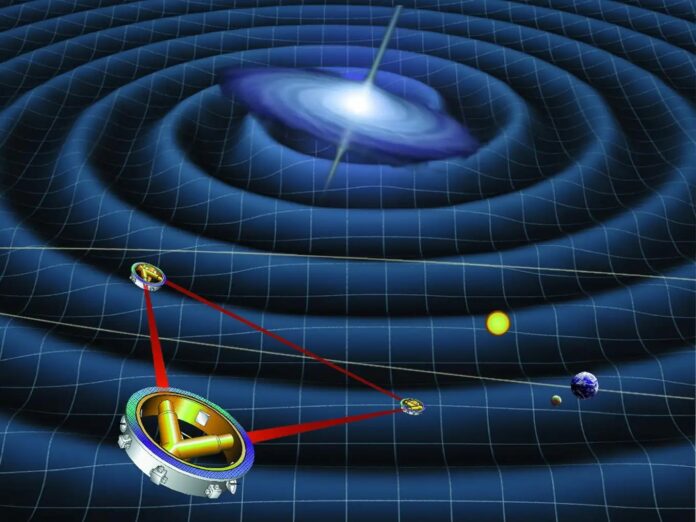At the University of Amsterdam, a group of academics led by Gianfranco Bertone are developing novel methods to gather data about black holes’ surroundings and the black holes themselves. The research team has demonstrated that it will be possible to distinguish between the presence of gas discs, dark matter, and new light particles around black holes with future space-based gravitational-wave detectors in a new analysis.
At least three fascinating environments could surround black holes. The most well-known one is an “accretion disc,” which is a disc of extremely hot gas whirling around the black hole, similar to those that the Event Horizon Telescope recently captured on camera. However, there are alternative options.
A cloud of extremely light particles may surround a black hole, creating a structure known as a gravitational atom. Finally, there is the possibility of dark matter, an enigmatic substance that seems to permeate the universe on all scales but whose fundamental makeup is yet unknown. As black holes originate and expand, it is anticipated to gather around them in spike-like, highly dense structures.
Pippa Cole, postdoctoral researcher in the group of Gianfranco Bertone and first author of the new publication, explains, “The beautiful thing is that with the new observations, it will become possible to distinguish between all three situations – as well as to distinguish them from the case where the black hole’s back yard is simply empty, where the two black holes spiral around one another in a vacuum. We developed statistical techniques that, given enough data and a large enough mass difference between the two black holes, should be able to differentiate between all four scenarios very clearly.”
The next generation of experiments, according to Cole and associates, will be able to detect gravitational waves produced by black hole mergers in the presence of a background, such as an accretion disc, gravitational atom, or dark matter spike. This makes it possible to use gravitational waves to look for potential dark matter candidates and new ultralight particles.
Gianfranco Bertone, and first author of the new publication, explains, “These are exciting times. We will soon enter a new era in physics and astronomy. Just like precision particle physics allows us to search for new physics in particle accelerators on Earth, precision gravitational wave astronomy will soon allow us to search for dark matter and new particles in the Universe.”
Journal Reference:
- Philippa S. Cole, Gianfranco Bertone, Adam Coogan, Daniele Gaggero et al. Distinguishing environmental effects on binary black hole gravitational waveforms. Nature Astronomy (2023). DOI: 10.1038/s41550-023-01990-2
